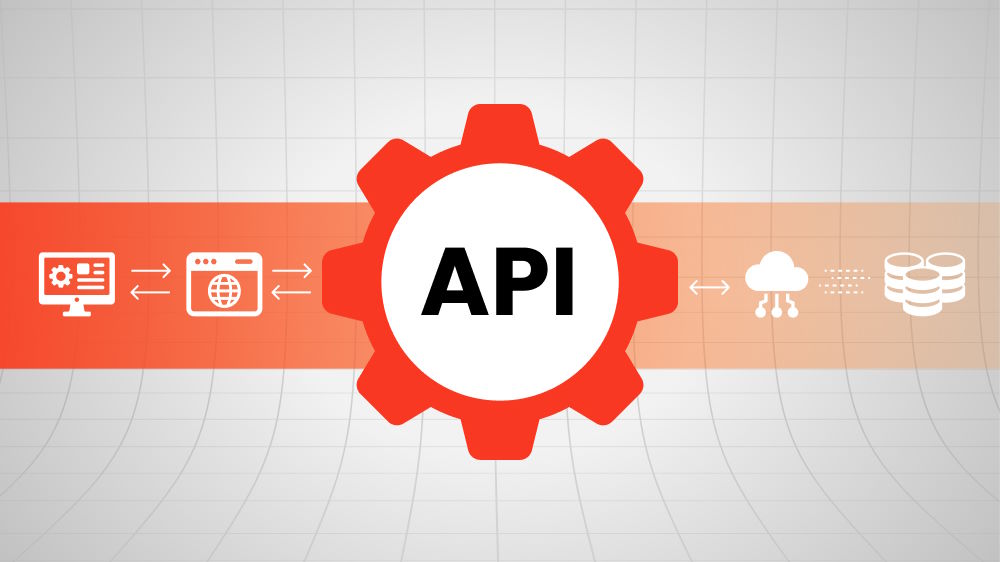How to Use EMR API Integrations to Provide Better Health Outcomes

Content Map
More chaptersHealthcare providers rely on large amounts of real-time data to make informed decisions. Electronic medical records (EMRs) help make this outcome possible, enabling medical staff to access patient data in one place.
However, integrating an EMR system into an existing practice can be difficult. Data privacy concerns and interoperability issues can hold back your digital transformation efforts. Understanding how the EMR integration process works – and how to use EMR APIs – can help you achieve seamless data flow.
In this article, you will learn about EMR APIs and what goes into the EMR integration process.
What Is an EMR API?

Before we discuss what an EMR API is, let’s cover the two terms separately first. The term EMR is short for electronic medical record, and the term API stands for application programming interface.
An EMR stores a digital copy of patient data. This may include the patient’s name and address, plus more sensitive medical data like their pre-existing conditions, prescribed medication, and test results. Traditionally, EMR data does not transfer easily from one medical practice to another.
An API is a set of protocols that allows two or more different software components to communicate and share data. Software developers use APIs to “bridge the gap” between unrelated software applications. By doing so, the software can leverage the data and capabilities of another to perform new functions.
What does this all mean? In a healthcare setting, EMR APIs help facilitate the flow of information across a medical practice. They allow various healthcare systems and medical devices to “talk” to each other.
How Do EMR APIs Work?

EMR APIs work by allowing disparate healthcare platforms to communicate and share data. The API acts as a bridge, allowing connected platforms to leverage each other’s data, processes, and functions. Establishing this connection allows the two platforms to do things they could not previously.
Here is an example of an EMR API in action. Let’s say a hospital admits a patient to the emergency department. The following events occur:
- The receptionist inputs the patient’s personal and medical details into an EMR system.
- A nurse assesses the patient’s condition, monitors their vital signs, and prescribes medication.
- A doctor sees the patient, arranging x-rays and other medical scans.
By inputting patient data into EMR software and connected IoT devices (heart rate monitors, smart pacemakers, and glucose monitoring implants), all of the above events are recorded and accessible in one place. All medical staff are on the same page, ready to take the next step in the patient care lifecycle.
The nurse knows the patient’s details (thanks to the receptionist). The doctor knows the patient’s treatment plan (thanks to the nurse). And the test results, once done, will be readily available to staff.
What Are the Advantages of an EMR API Integration?
Healthcare providers and patients benefit greatly from an EMR API integration strategy.
Medical staff can communicate and share information more easily. Patients receive faster, more personalized care. Plus, medical practices ensure compliance with strict data privacy and data protection regulations.
Here is a more detailed breakdown of what these advantages mean.
Improved Communication for Medical Staff
Medical staff need easy access to patient data to make informed decisions. An EMR API integration makes this possible by consolidating data from multiple sources into one place.
Within the same medical practice, staff across multiple departments can update and review patient data from connected IoT devices. If a patient is transferred from an emergency department to cardiology, their data will be sent to the next department.
This seamless flow of information helps unfamiliar staff get up to speed with a patient’s treatment plan.
Improved Patient Outcomes
Improving patient outcomes should be a high priority for any healthcare provider. An EMR API integration strategy lets you link your in-house EMR system to third-party services. These include external patient booking platforms, billing portals, and insurance management services.
EMR API integrations help improve patient outcomes by streamlining every step of the process. Patients can use an external patient booking platform to pre-fill their data, meaning less paperwork in the waiting room.
Healthcare providers can also integrate patient data with billing portals and insurance companies. This makes it easier for patients to use their insurance premiums to cover treatment costs, from prescriptions to medical scans to surgical operations.
Comply with Patient Data Privacy and Data Protection Regulations
Modern healthcare data is subject to strict data privacy and confidentiality standards.
Notable standards include the Service Organization Controls (SOC) 2 audit and the Health Insurance Portability and Accountability Act (HIPPA) in the United States. These acts require healthcare organizations and EMR vendors to take specific measures to ensure patient privacy and confidentiality.
An EHR integration strategy with a robust cyber security framework can help your practice comply with strict data privacy and confidentiality standards. This includes built-in EMR tools such as data encryption, firewalls, access controls, DNS filters, and more.
These security measures help block malicious incoming traffic and enforce strict authorization policies.
Best Practices to Follow for an EMR API Integration Project

There are key aspects to consider when preparing an EMR API integration project. Integrating your in-house EMR system with third-party services can be extremely risk, so you must plan accordingly.
Here are a few tips to follow when starting your EMR API integration plan.
Define EMR API Integration Scope and Objectives
Defining your scope will help lay the groundwork for the whole integration project.
The first step is to identify the existing pain points that your practice is experiencing. This could be anything from data entry errors to long patient waiting times to miscommunication between departments. Distribute a questionnaire to healthcare professionals, using their feedback to identify pain points and measure their effects.
From there, determine the type of EMR API integrations needed to resolve those pain points and allocate a budget as well. Set aside resources for vendor research and selection, staff training, data migrations, and ongoing maintenance.
Choose the Right EMR API Vendors
When researching vendors, take the time to evaluate their capabilities. These include key features, configurations, customizations, and technical support. You should also confirm that each vendor adheres to all relevant data privacy and confidentiality standards.
EMR systems and third-party services may have conflicting technology stacks and data storage requirements. Incompatible data formats may need to be standardized before integrating with the EMR system. Conflicting communication protocols can also present challenges, as some APIs operate on the REST communication protocol while other APIs use HTTP.
Comparing each EMR API vendor’s technical specifications with your own will help prevent integration and incompatibility issues from arising.
Prepare the Integration Roadmap
The next step is to prepare a formal EMR API integration roadmap. This involves gaining a in-depth understanding of your medical practice and its unique systems and configurations. Take the time to assess your existing EMR systems, data workflows, automation, and integration requirements.
Then, assemble an EMR API integration team. Your integration team may involve a combination of clinicians, IT teams, and administrators. Involving medical staff in the integration process will ensure the new EMR solutions integrate seamlessly with your existing workflows.
Lastly, ensure that any new data to be integrated into the EMR system is accurate, up-to-date, and consistent. Data science experts can help clean up and validate your data to help drive better decision-making in your practice.
Provide Staff Training and Support
Some staff may be unreceptive to using new EMR systems and third-party services in your practice. Others may require additional support to get up to speed with the new custom healthcare software solutions.
For these reasons, you must provide staff training and support as part of your EMR API integration project. Official EMR training and practicing programs help medical staff learn to use different software in a simulated environment with test patient records.
Also, many EMR training providers incorporate cybersecurity training into their programs. These modules teach staff how to identify and avoid attempted cybersecurity attacks, including phishing scams and malware.
Streamline Your EMR API Integrations with Orient Software
EMR API integrations are a big undertaking. They require serious time and effort to execute properly. And they require collaborating with numerous stakeholders – inside and outside of your practice. For this reason, you must partner with technology experts who can help achieve your goals.
Orient Software offers a range of services for digital health startups and medical practices. Our staff augmentation service can fill hard-to-fill and temporary jobs in your company. Our dedicated software teams are specially chosen to focus on your specific needs.
So, whether you need help establishing a new EMR system or incorporating third-party services into your existing system, we are ready to help.
Contact us today to see how we can help your medical practice thrive in the current digital age.







